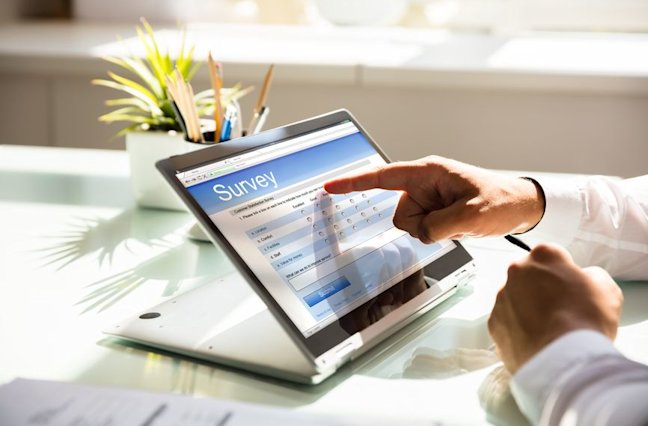How AI is powering a frictionless future in retail CX
The retail climate for 2025 is a bit uneasy. But AI is helping retailers create more fluid, personalized experiences. Learn how AI is reshaping both t...
CallMiner Outreach is here! |Learn about the future of CX

Solutions
Products
Customers
Solutions
Products
Customers
Resources
Company
In the last decade I’ve seen and run a lot of Customer Listening programs. Here’s the one thing I know for sure: high quality Customer Listening programs always meets the same 5 standards. Meeting these standards achieves dependable, high-insight data. Failing to meet these standards often steers companies off course.
These 5 standards are not an ideal but rather the minimum requirement. Once you’ve met them, there are many ways to add depth and nuance to your Customer Listening. For instance, to get more insight and improve ease-of-use, build operations data into your surveys. Or, you can replace your conventional surveys with a rigorous, yet free form, next-generation approach.
So, let’s start with a definition of Customer Listening.
Qualtrics, the dominant survey software platform defines Customer Listening as, “a term that describes your customer’s feedback about their experiences”. That definition (while prevalent among customer feedback discourse) omits the crux of what Customer Listening is.
First, Customer Listening is often best when it doesn’t come from solicited customer feedback. Observations of your customers as they interact with your company or your products, frequently yields more nuanced insights.
Piper Smith, Sr. Consumer Insights Researcher of Nautilus, Inc. says: “We got the answers to questions we knew to ask in our surveys, but it took watching customers actually using our products in their homes to see where our assumptions were wrong. We found huge opportunities to improve that we just hadn’t even considered.”
In other words, surveys alone limit you to what you already know to ask about. Listening that expands beyond surveys has the potential to add significant actionability.
The second problem with defining Customer Listening simply as customer feedback is that it neglects your side of that listening. How you listen is key and should be part of the definition.
Here’s my shot at a definition: Customer Listening is a research-driven discipline that requires an open, curious, and scientific state of mind. It seeks concrete insights to improve the customer experience and it explores customer successes, friction points, and missed opportunities. In addition, it’s a way to stay on top of—and address—customer issues.
Customer Listening can ask tactical questions such as:
It can also address strategic concerns like:
Whether tactical or strategic, when done correctly, Customer Listening gives you greater accountability, more insight, and a lens into the details that will boost employee and customer happiness.
Now, on to the 5 standards…
If your data fails to capture what’s really going on with the customer experience, what’s the point?
How to be more objective with your Customer Listening could fill an entire book, but here are three best practices to get you started:
Surveys may be the default method, but they’re not always the best tool. Ask yourself what you need to know. Then, match your methods to those objectives. Methods outside of surveys include customer interviews, mystery shops, and customer service evaluations.
With your surveys this means:
And, if you can find out how you’re doing without asking your customers, that’s even better! For example, if you have contact centers, instead of surveying customers about their interactions, apply statistically-valid analysis to your calls, emails, and chats.
This gives you data that is inherently more accurate and objective, without taxing your customers. And as Piper Smith mentioned earlier, for Nautilus, observing customers uncovered opportunities they simply were not seeing in their surveys.
This is where nuance and insights come in.
Share your Customer Listening through dynamic formats so that teams are motivated to act.
The 5 Customer Listening standards I’ve outlined are interconnected and work together as a system. For example, interactive dashboards are a great way to visualize your findings. But if those dashboards are based on biased data, then you’ve reached a dead-end.
Or, if you have objective survey questions but your survey fails to engage customers, you’ll have a low response rate and potentially misrepresentative data.
For your Customer Listening program to be valuable, uphold ALL 5 standards.
Customer Listening is often treated as a cut and paste task that doesn’t require time or expertise. But if you ask tired questions in tired ways you won’t learn much.
Customer Listening is a research discipline. If you are open, curious, and scientific in your approach, you’ll gain actionable insights that can dramatically improve your business.
CallMiner is the global leader in AI-powered conversation intelligence to improve customer experience (CX). CallMiner delivers the industry’s most comprehensive platform to analyze omnichannel customer interactions at scale, combining deep domain expertise with cutting edge AI analytics and machine learning. By uncovering better intelligence, CallMiner enables companies to identify areas of opportunity to drive better experiences, ultimately leading to business improvement, growth and transformational change. CallMiner is trusted by the world’s leading organizations across all major verticals including technology, media and telecom (TMT), retail, manufacturing, financial services, healthcare, and travel and hospitality.

